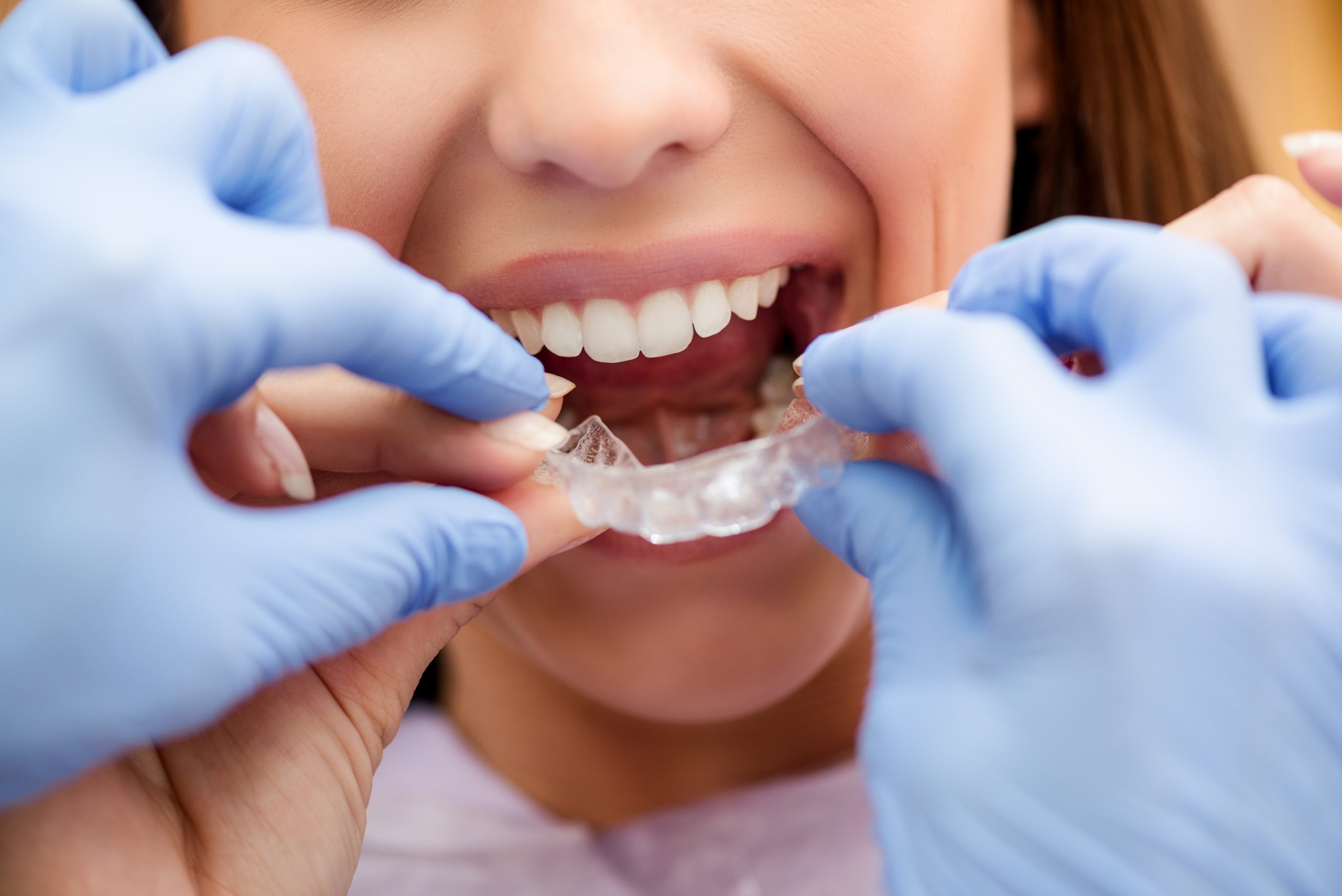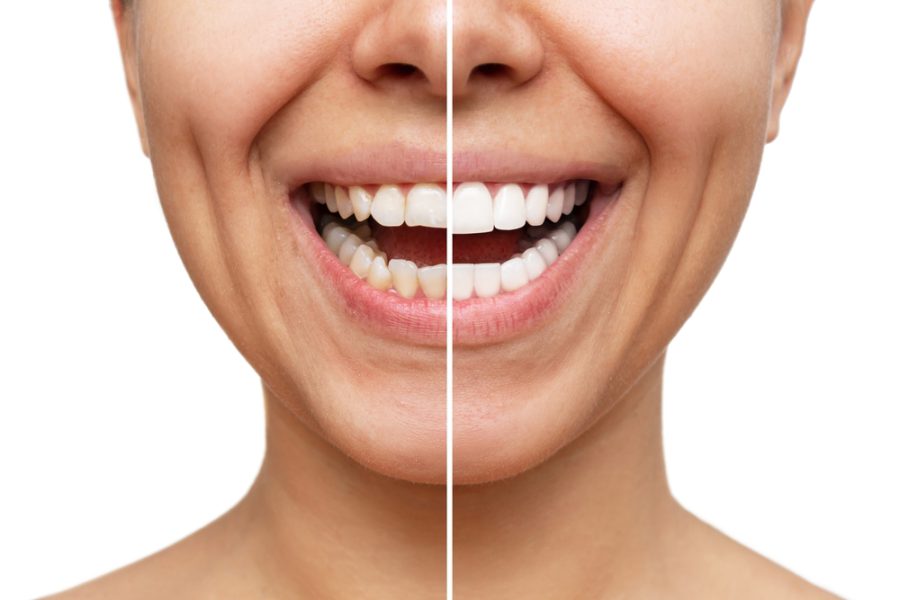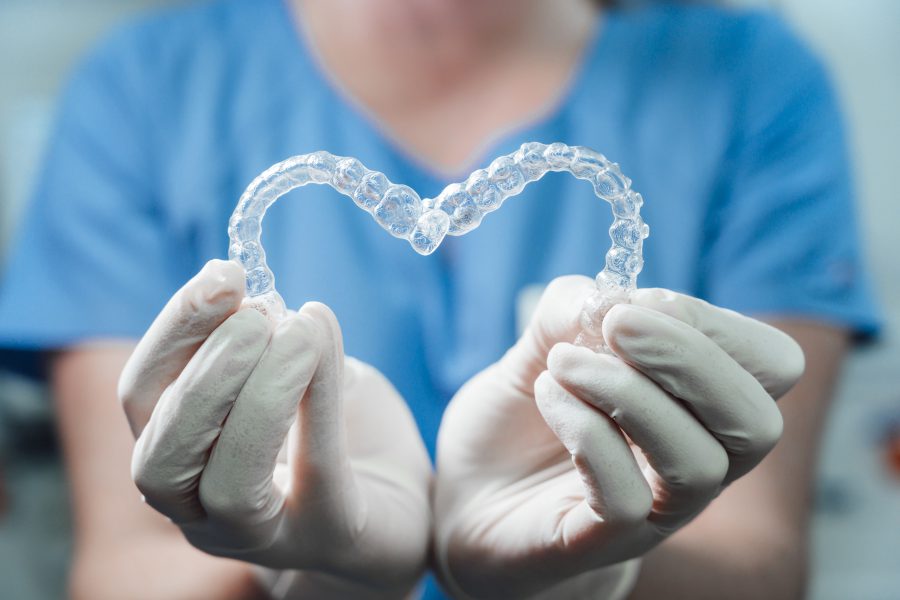What Is Invisalign?
Invisalign is an innovative orthodontic treatment that uses a series of clear, removable aligners to straighten teeth without the need for traditional metal braces. It is a comfortable and discreet way to achieve the smile you’ve always wanted. Invisalign aligners are custom-made for each patient and gradually move teeth into the desired position over time. Unlike traditional braces, they can be removed for eating, brushing, and flossing so there’s no need to change your lifestyle during treatment. Invisalign also allows patients to monitor their progress throughout treatment with digital scans and images taken at each appointment. Treatment times vary depending on the severity of the case but typically range from 6-18 months. The Invisalign system is ideal for teens and adults who want a straighter smile without the hassle of traditional braces. With regular checkups and diligent wear of aligners, Invisalign can help you achieve your dream smile in no time!
What Is Braces?
Braces are a type of orthodontic treatment used to correct misaligned teeth and jaws. They consist of metal brackets that are bonded to the teeth and connected by wires, which are tightened periodically to move the teeth into the desired position. Braces can be used to treat a variety of dental issues, including crooked or crowded teeth, overbites, underbites, and jaw problems. In addition to correcting misalignment, braces can also improve the appearance of your smile and boost your self-confidence. The process typically takes several months or even years depending on the severity of the case. During this time, patients must wear their braces for at least 20 hours a day and visit their orthodontist regularly for adjustments. Although wearing braces may be uncomfortable at first, many people find that they quickly get used to them and enjoy having straighter teeth in the end. With proper care and maintenance, braces can help you achieve a beautiful smile that will last a lifetime!

What Are They Made Of?
Braces are typically made from stainless steel or titanium, and consist of brackets that are bonded to the front of each tooth. The brackets are connected by an archwire, which applies pressure to the teeth in order to move them into their desired position. Brackets may also be connected with elastic bands or tiny rubber bands called ligatures in order to help keep the archwire in place. Braces can also include headgear, which helps move the upper teeth back into place.
Invisalign is a newer orthodontic treatment that uses clear plastic aligners instead of metal brackets and wires. These aligners are custom-made for each patient using 3D imaging technology, and they fit snugly over the teeth like a mouthguard. The aligners apply gentle pressure to the teeth in order to move them into their desired position over time. They must be worn for at least 22 hours per day in order for them to be effective, but they can be removed when eating or brushing your teeth.

Is There Any Age Limit On Invisalign and Braces?
Yes, people of all ages are suitable for treatment with braces and Invisalign. Braces and Invisalign are two of the most popular orthodontic treatments available today. Both options can help correct misaligned teeth, improve bite alignment, and give you a beautiful smile. The main difference between braces and Invisalign is that braces use metal brackets and wires to move your teeth into place while Invisalign uses clear plastic aligners that fit over your teeth.
Braces are typically recommended for children, teenagers, and adults who have severe misalignment or malocclusion issues. Braces are often the best option for those who need to make major changes to their bite or have severely crooked teeth. With braces, the brackets and wires put pressure on the teeth to move them into the desired position over time. Braces may take up to two years or more to achieve the desired results depending on how much movement is needed.
Invisalign is a great alternative for adults who want a less noticeable orthodontic treatment option. Unlike traditional braces, Invisalign uses clear plastic aligners that fit snugly over your teeth without any metal components visible from the outside. The aligners apply gentle pressure to your teeth in order to move them into place gradually over time. Depending on how much movement is needed, it can take anywhere from six months to two years or more for Invisalign treatment to be completed successfully.
Overall, both braces and Invisalign can be used effectively by people of all ages who need orthodontic treatment. It’s important to consult with an experienced orthodontist in order to determine which option is best suited for your individual needs and goals. With either choice, you can expect straighter teeth and improved oral health in no time!

Are Invisalign or Braces easier to care?
Both have advantages and disadvantages when it comes to care, so it’s important to consider which one is best for you.
When it comes to braces, they require a bit more maintenance than Invisalign. Braces are typically made of metal brackets and wires that are attached to the teeth with a special adhesive. The brackets need to be cleaned regularly with a toothbrush and flossed daily in order to keep them free from food particles and plaque buildup. It is also important to avoid certain foods that can damage the braces or cause discomfort, such as hard candy or sticky foods. Additionally, regular visits to the orthodontist are necessary in order for them to check on the progress of your treatment and make any necessary adjustments.
In comparison, Invisalign is much easier to care for than braces. The aligners are made of clear plastic trays that fit snugly over your teeth like a mouthguard. Unlike braces, these trays can be removed when eating or brushing your teeth so there is no need for extra cleaning or avoiding certain foods. In addition, since they are removable, they can be taken out while participating in sports or other activities that could potentially damage the braces. While regular visits with an orthodontist are still necessary during treatment, they will not require as many adjustments as traditional braces do since the aligners will be replaced every two weeks instead of adjusted manually by the doctor.
Overall, both braces and Invisalign offer great results when it comes to straightening teeth but depending on your lifestyle and preferences one may be better suited for you than the other when it comes to care. Braces require more maintenance but offer more control over movement while Invisalign requires less upkeep but has fewer options for adjustment if needed. Ultimately, speaking with an orthodontist about which option is best for you will help you decide which treatment is right for you based on your individual needs and lifestyle requirements.

Prices Per Region For Invisalign and Braces
The cost of Invisalign and braces can vary greatly depending on where you live, as well as the complexity of your case. In this blog post, we will discuss the costs of Invisalign and braces in regions around the world.
In Turkey, the cost of Invisalign can range from $2,000 to $4,500 USD depending on the complexity of your case. This price includes both upper and lower aligners, with additional aligners costing extra. Braces in Turkey typically cost between $2,000 and $5,000 USD depending on the type of braces used (metal or ceramic) and the complexity of your case. It is important to note that these prices do not include any additional fees such as consultation fees or follow-up visits.
In North America (United States & Canada), the cost of Invisalign ranges from $3,500 to $8,000 USD depending on your location and case complexity. Braces in North America usually cost between $3,500 and $7,000 USD depending on what type of braces are used (metal or ceramic) and how complex your case is. Again, these prices do not include any additional fees such as consultation fees or follow-up visits.

In Europe (including UK & Ireland), the cost of Invisalign ranges from €2,500 to €6,000 EURO depending on your location and case complexity. Braces in Europe usually cost between €2,500 and €5,000 EURO depending on what type of braces are used (metal or ceramic) and how complex your case is. Again these prices do not include any additional fees such as consultation fees or follow-up visits.
In Australia & New Zealand (ANZ), the cost of Invisalign ranges from AUD$3200 to AUD$8000 depending on your location and case complexity. Braces in ANZ usually cost between AUD$3000 – AUD$7000 depending on what type of braces are used (metal or ceramic) and how complex your case is. Again these prices do not include any additional fees such as consultation fees or follow-up visits
Finally in Asia Pacific region including India & China ,the cost for Invisalign ranges from INR 1 lakhs – INR 4 lakhs while for braces it ranges from INR 40k – INR 1 lakhs again based upon type & complexity . Additional charges may apply if you require a more specialized treatment plan like lingual braces etc .
Overall , it’s important to remember that there are many factors that can affect the overall costs associated with either Invisalign or braces, including location , complexity , materials used etc . It’s best to consult with an orthodontist near you for a personalized quote based upon your specific needs.

Potential Complications Of Invisalign and Braces
While both treatments have their advantages, it is important to consider which one is more likely to cause complications. In this article, we will compare braces and Invisalign to determine which one tends to give more complications to patients.
Braces are a traditional treatment that uses metal brackets and wires to move teeth into the desired position. Braces are often used in more severe cases where teeth need significant movement or alignment. While braces can be effective in correcting dental issues, they may also cause some discomfort due to the pressure they put on the teeth and gums. Additionally, braces can cause mouth sores due to the rubbing of the metal against the soft tissue in the mouth.
Invisalign is an alternative treatment that uses clear plastic aligners instead of metal brackets and wires. The aligners are custom-made for each patient’s individual needs and fit snugly over their teeth. This makes them much less noticeable than traditional braces, as well as more comfortable for many patients. However, since Invisalign does not use any metal components, it may not be able to correct certain types of dental issues as effectively as braces can. Additionally, if the aligners are not worn for at least 22 hours per day, they may not be able to effectively move teeth into their desired positions.
When considering which treatment is more likely to cause complications, it is important to take into account both the potential benefits and risks associated with each option. Braces can be effective in correcting severe dental issues but may also cause discomfort due to the pressure they put on teeth and gums. On the other hand, Invisalign offers a discreet alternative that is often more comfortable for patients but may not be able to correct certain types of dental issues as effectively as braces can.
Overall, while both braces and Invisalign offer advantages when it comes to straightening teeth and correcting bite issues, neither treatment is without its risks or potential complications. Ultimately, it is up to each individual patient’s dentist or orthodontist to decide which treatment will best suit their needs based on their particular situation.

Invisalign Or Braces, Which Gives One Gives A Brighter Smile?
Braces and Invisalign are both popular treatments for straightening teeth, but which one is better? It really depends on the individual’s needs and preferences. Both braces and Invisalign can give excellent results, but each has its own advantages and disadvantages.
Braces have been around for decades, and they remain a popular choice for many people. Braces use metal brackets and wires to move teeth into their desired position. They can be adjusted easily, allowing orthodontists to make precise adjustments to the alignment of the teeth. Braces are also relatively affordable compared to other orthodontic treatments. The downside is that braces are visible, so some people may feel self-conscious about wearing them. Additionally, it can take longer for braces to produce results than with other treatments like Invisalign.
Invisalign is a newer treatment option that uses clear plastic aligners instead of metal brackets and wires. These aligners are custom-made for each patient, so they fit snugly over the teeth without being noticeable to others. Invisalign is also faster than traditional braces in most cases; many patients see results within 6 months or less! However, Invisalign tends to be more expensive than braces due to the cost of manufacturing custom aligners for each patient. Additionally, it requires more discipline from the patient since they must wear their aligners as instructed in order to achieve optimal results.
Ultimately, it’s up to you (and your orthodontist) to decide which treatment option is best for you based on your individual needs and preferences. If you’re looking for an affordable solution that produces long-term results, then traditional braces may be your best bet. On the other hand, if you want a fast treatment option that won’t draw attention from others then Invisalign might be right for you!






